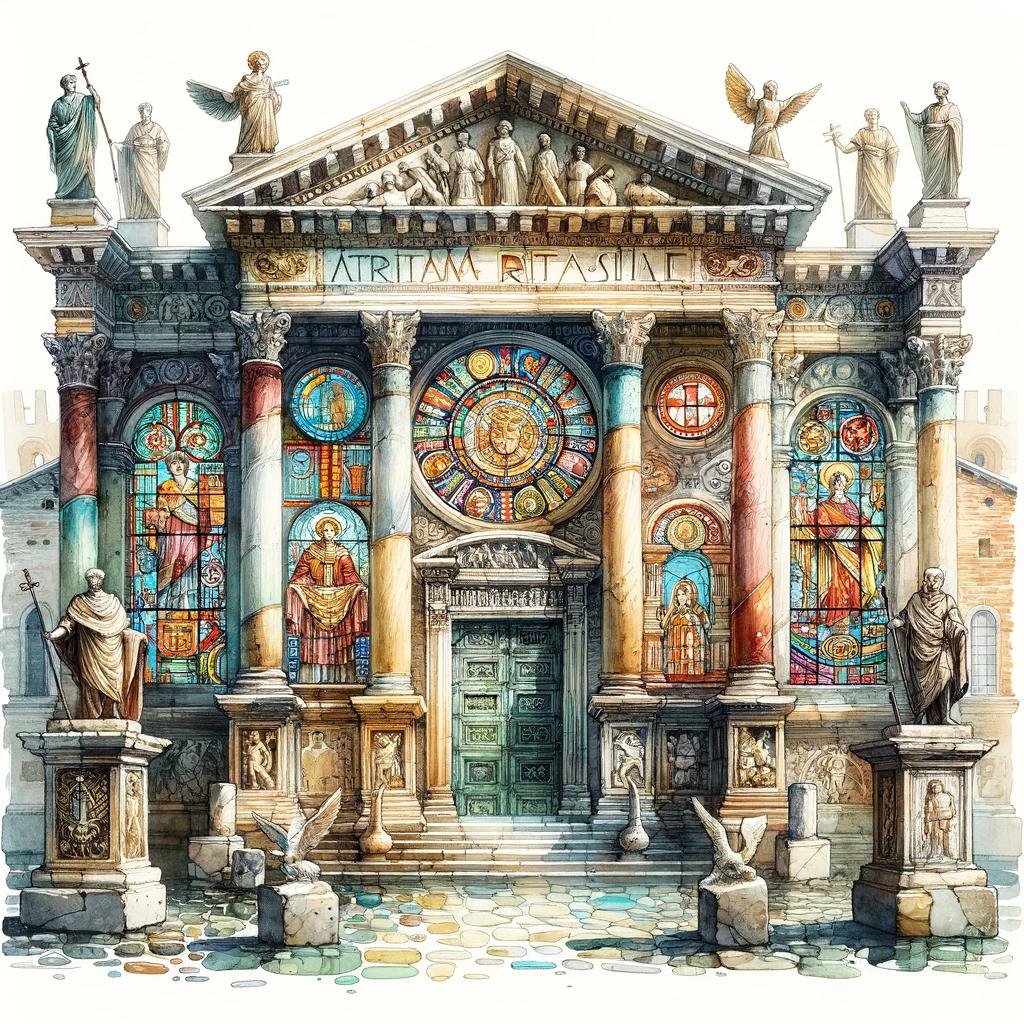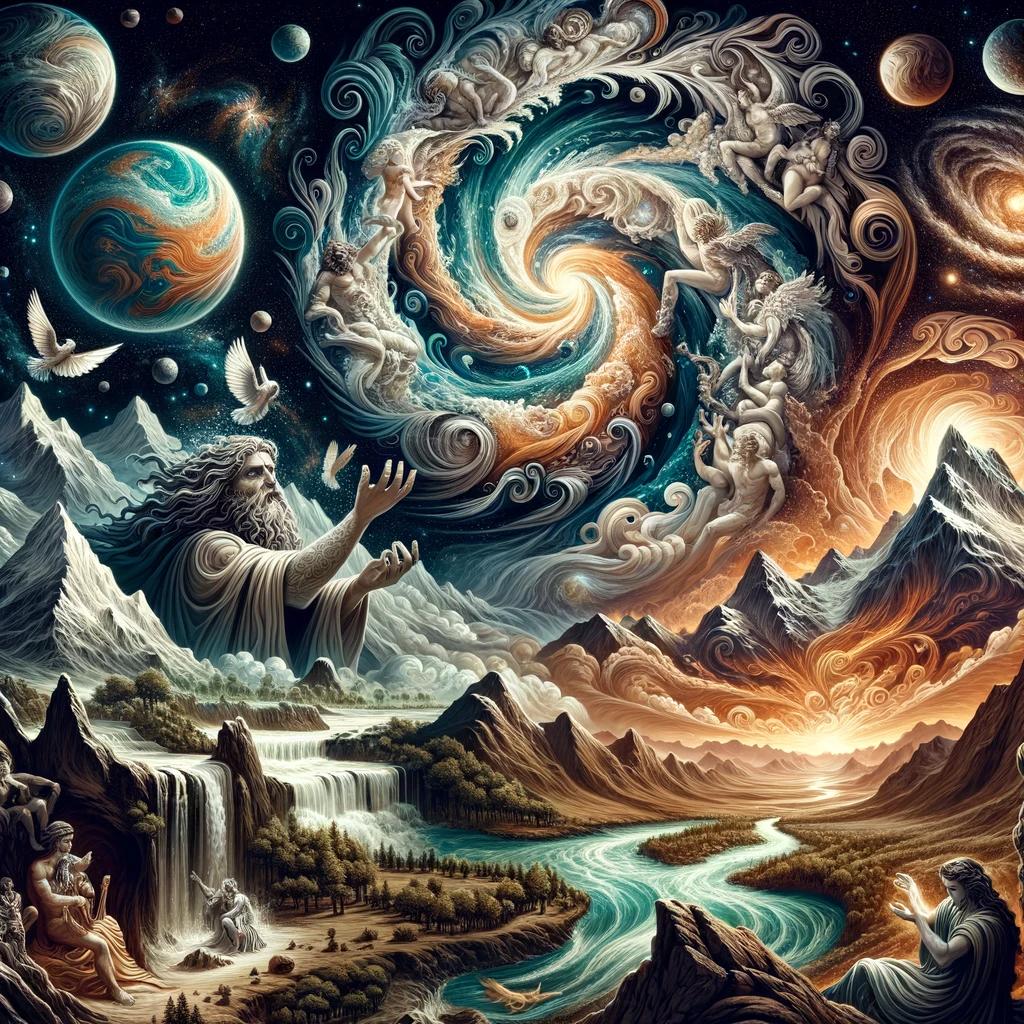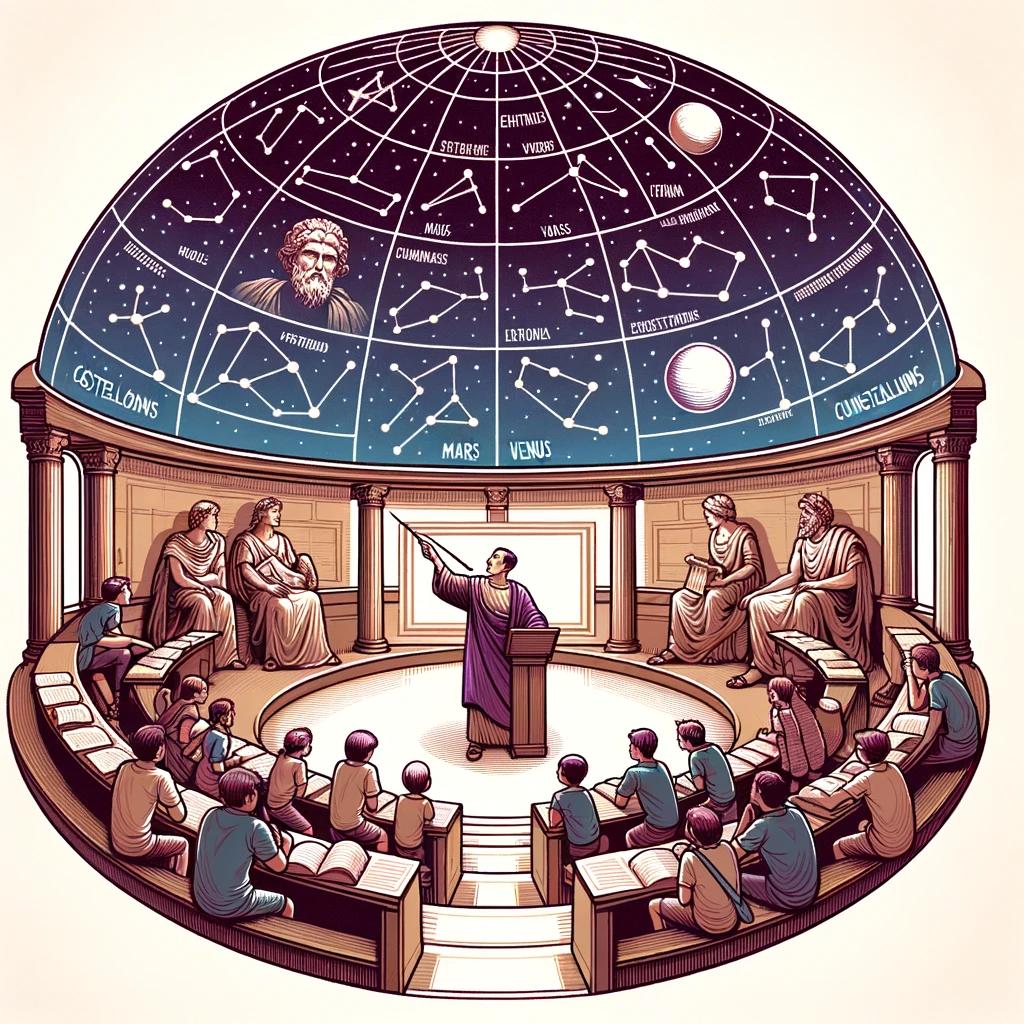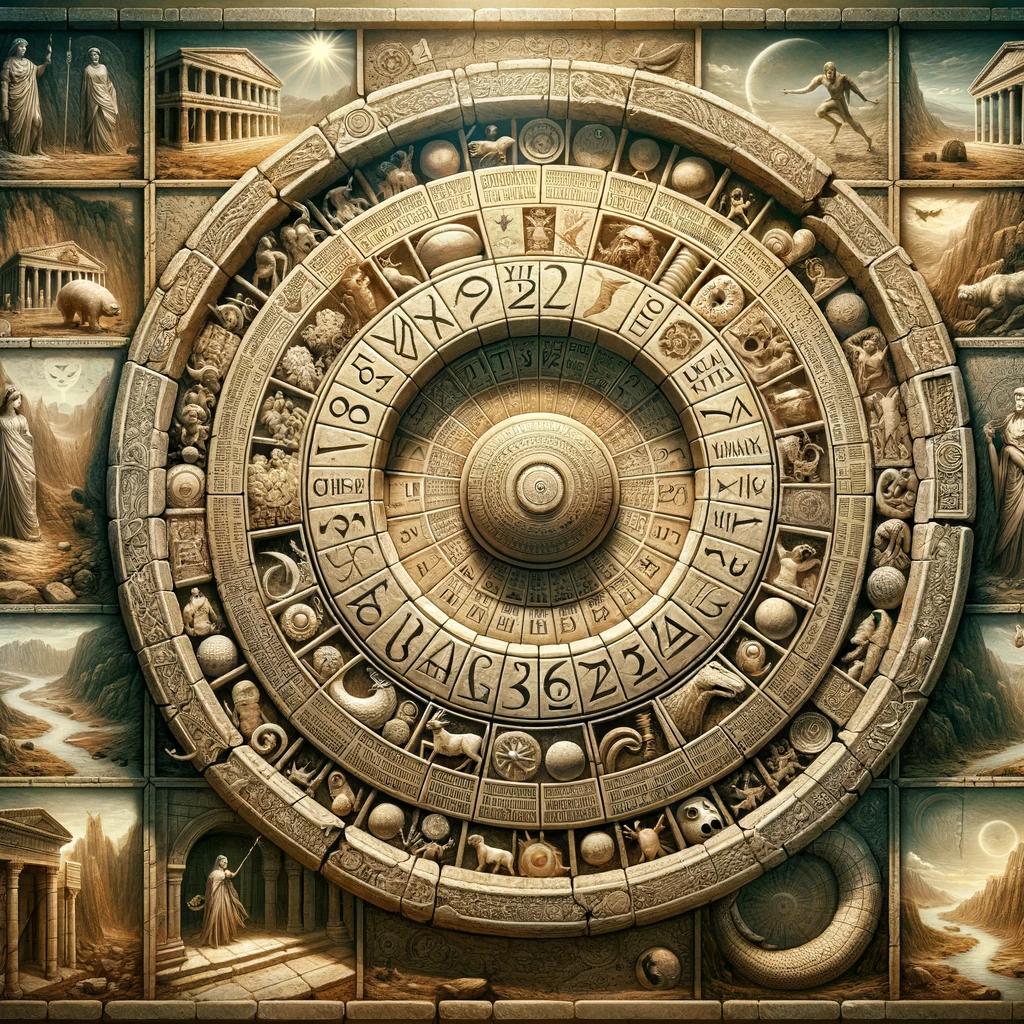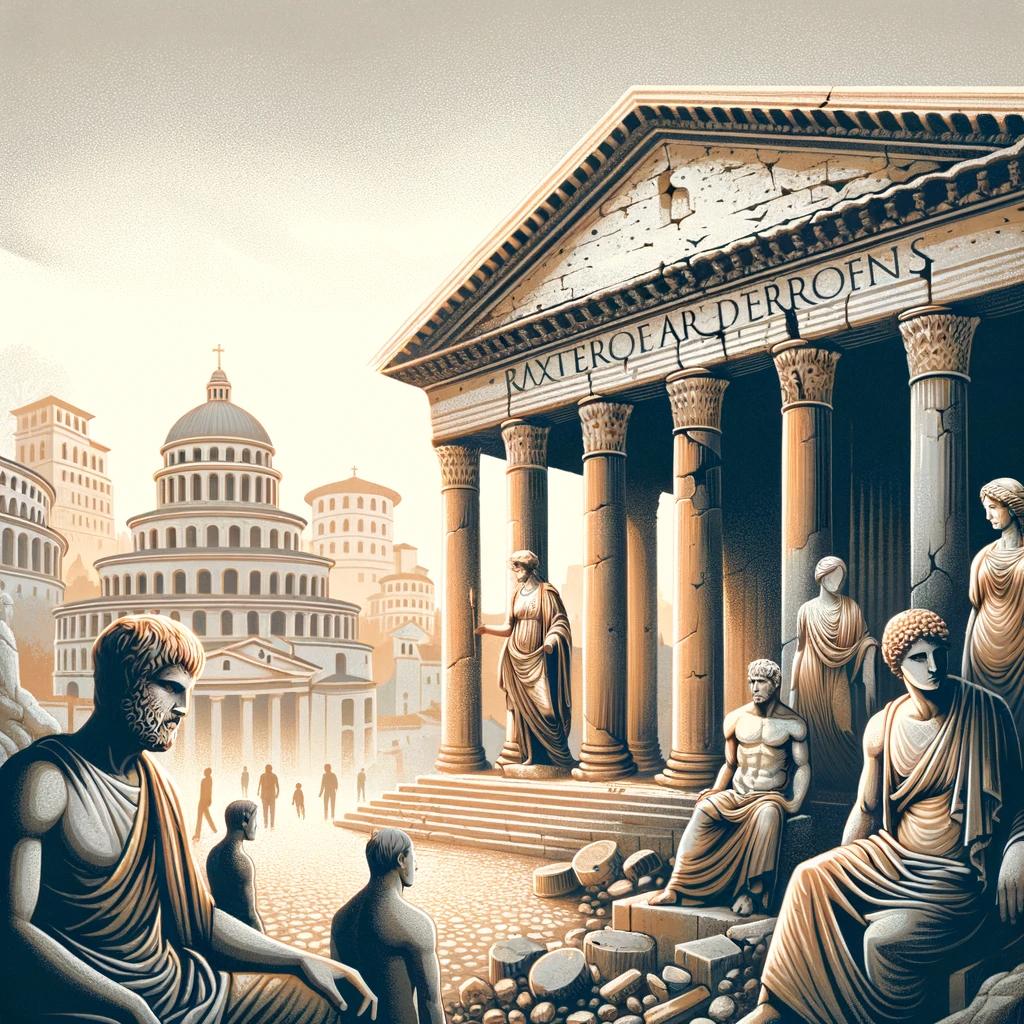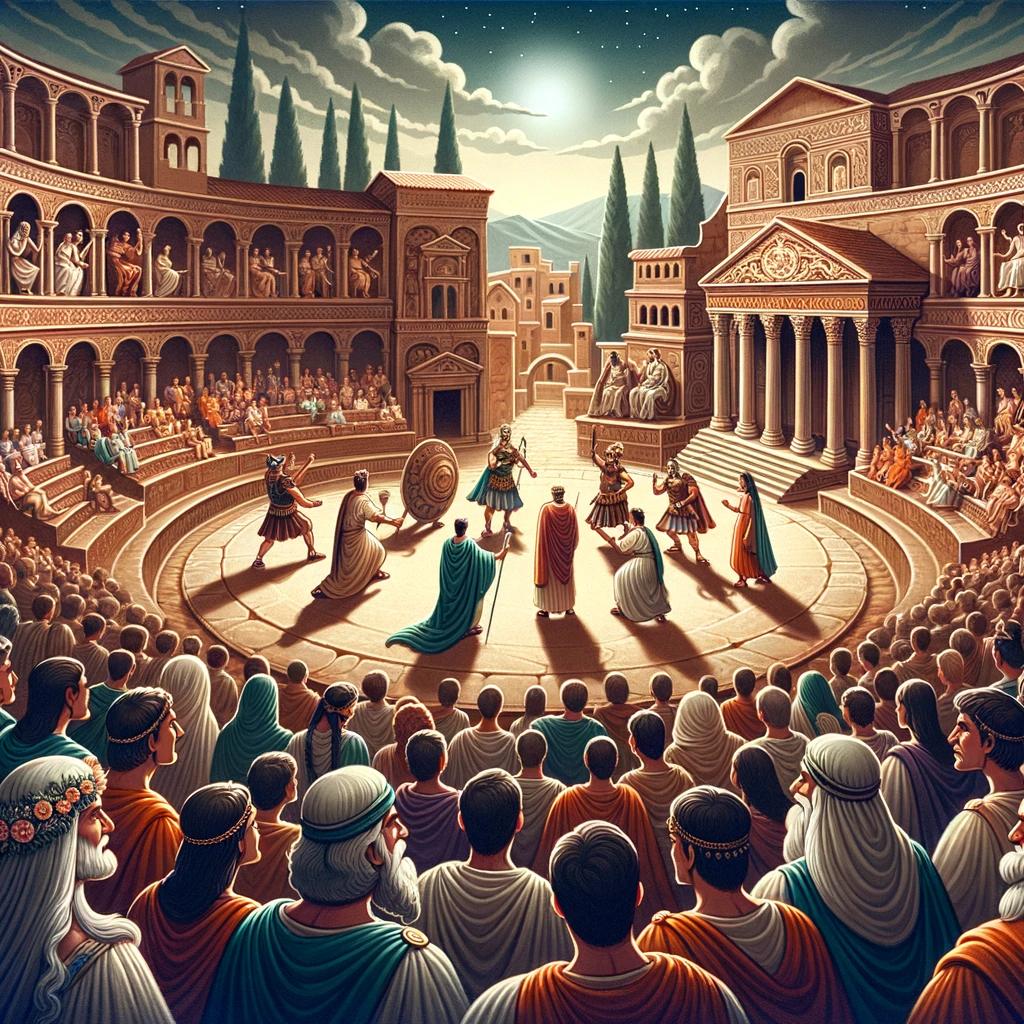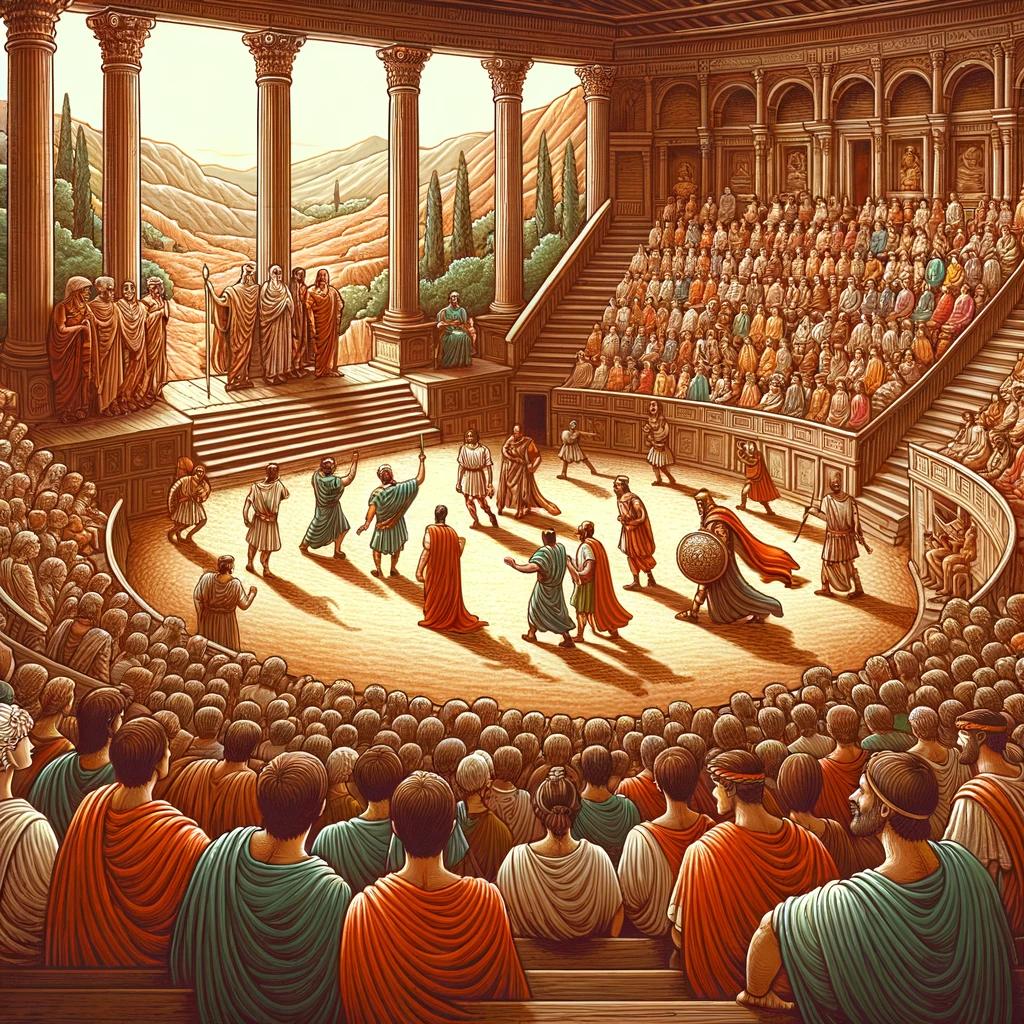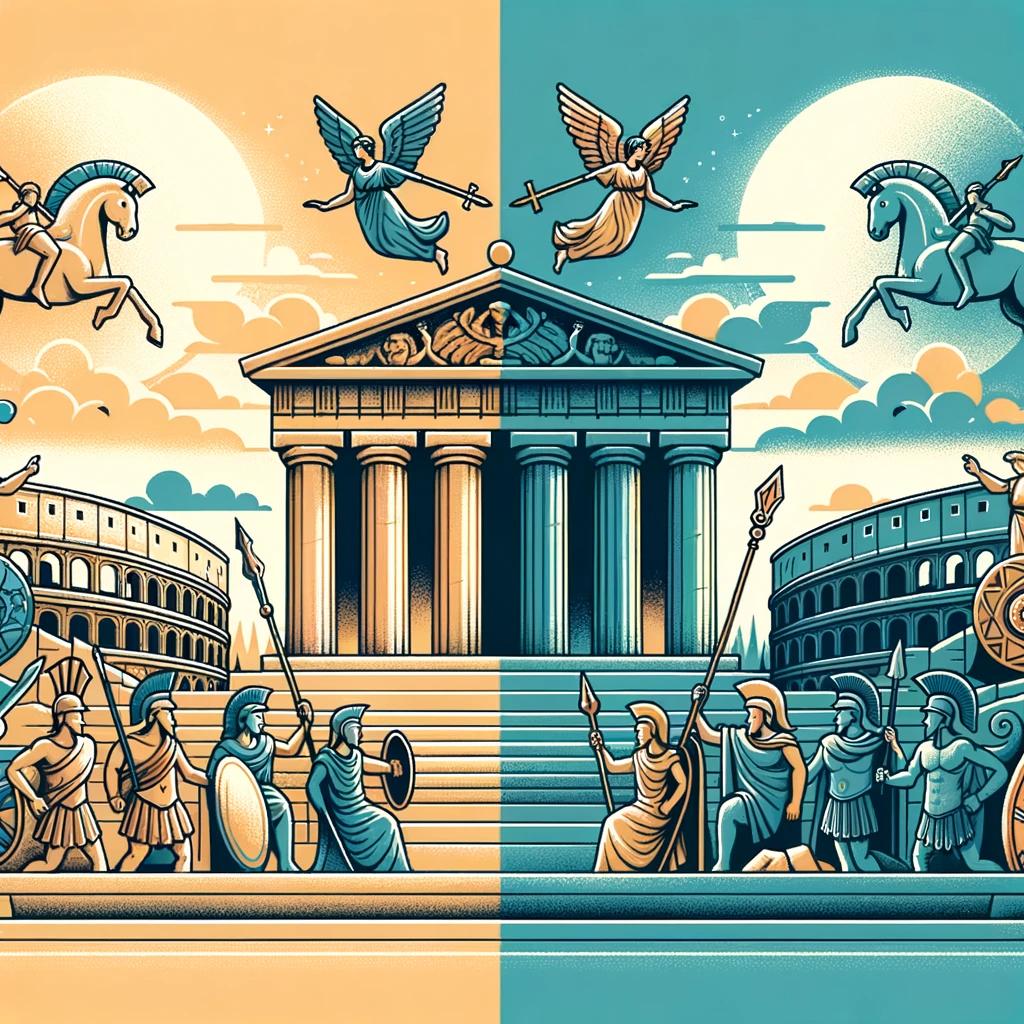Roman Mythology and Christianity: Exploring the Connections and Contrasts
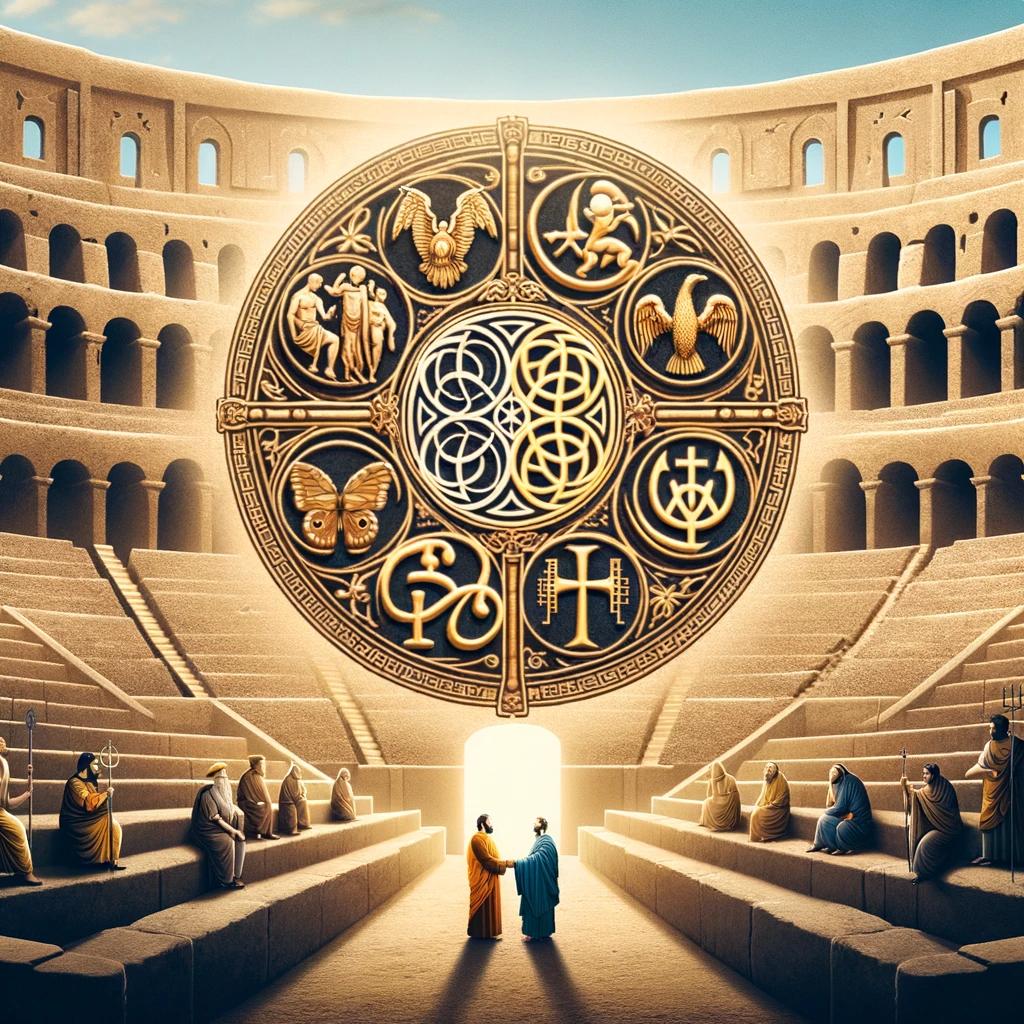
Roman Mythology and Christianity have both played significant roles in Western history and culture. Ancient Romans worshiped a pantheon of gods and goddesses, while Christianity emerged as a branch of Judaism, emphasizing monotheism and sacred scriptures.
Comparing these belief systems, we find contrasts in polytheism versus monotheism, public rituals versus private worship, and the role of scriptures. The influence of Roman mythology on early Christianity and the eventual adoption of Christianity by the Roman Empire further highlight the parallel influences and religious syncretism.
These enduring legacies continue to shape Western art, literature, and cultural symbolism.
Ancient Roman Beliefs and Gods
In ancient Rome, religion played a central role in daily life. The Romans worshipped a wide variety of gods and goddesses, each associated with different aspects of life and nature. Here is an overview of ancient Roman religion, the pantheon of gods and goddesses, and the beliefs and practices that characterized their worship.
Overview of Ancient Roman Religion
Ancient Roman religion was a complex system of beliefs and rituals derived from various sources, including indigenous Roman deities and influences from Etruscan and Greek mythology. The Romans believed that appeasing the gods and goddesses through sacrifices and rituals was essential for maintaining the favor and protection of these divine beings.
The Pantheon of Roman Gods and Goddesses
The Roman pantheon consisted of numerous gods and goddesses, with each deity presiding over a specific aspect of life or nature. Some of the most revered gods included Jupiter, the king of gods, Mars, the god of war, Venus, the goddess of love and beauty, and Neptune, the god of the sea.
The pantheon also included goddesses such as Juno, Minerva, and Diana, who represented various aspects of femininity, wisdom, and the hunt, respectively.
Beliefs and Practices in Ancient Rome
Roman religious beliefs emphasized the importance of maintaining a harmonious relationship with the gods.
The Romans sought to cultivate pietas, a sense of duty and devotion, towards the gods and their ancestors. They believed in the concept of numina, the divine forces present in everything, from natural phenomena to household objects.
- The Romans believed that deities could communicate their will through signs and omens, and they sought guidance from priests and augurs.
- The worship of gods and goddesses involved offering sacrifices, which could range from simple offerings of food and incense to elaborate ceremonies involving animal sacrifices.
- Each household had its own personal gods, known as the Lares and Penates, who were believed to protect the family and the home.
Ancient Roman religion was deeply ingrained in the fabric of society, permeating all aspects of life, including politics, family, and community.
It provided a framework for understanding the world and one’s place within it.
Christian Origins and Beliefs
This section will delve into the emergence of Christianity as a branch of Judaism and explore its key tenets and teachings. The rise of Christianity as a distinct religious movement began within the province of Judea in the Roman Empire during the 1st century CE.
Emergence of Christianity as a Branch of Judaism
Christianity originated from the teachings and life of Jesus, who was born in the Roman province of Judea and grew up in a Jewish family. He preached about love, forgiveness, and the coming of the Kingdom of God.
Jesus’ followers, known as disciples, continued his teachings after his crucifixion and claimed he had resurrected, solidifying his status as the Messiah.
Key Tenets and Teachings of Christianity
Christianity centers around the belief in one God, who is viewed as loving, merciful, and just. Jesus is considered the Son of God and the savior of humanity, who sacrificed himself to atone for human sins.
Key teachings of Christianity include the importance of faith, love for one another, and adherence to moral principles outlined in the Scriptures.
The Bible, comprising the Old Testament and the New Testament, serves as the sacred text of Christianity.
The Old Testament contains religious teachings and historical accounts preceding the birth of Jesus, while the New Testament focuses on Jesus’ life, teachings, and the early Christian community. The Gospels of Matthew, Mark, Luke, and John provide accounts of Jesus’ life, teachings, death, and resurrection.
Christianity emphasizes the concepts of salvation and eternal life. It teaches that faith in Jesus and acceptance of his sacrifice is necessary for redemption and entry into God’s kingdom. The sacraments, such as baptism and the Eucharist, hold special significance in Christian worship and spirituality.
Christianity spread rapidly in the Roman Empire, attracting followers from diverse backgrounds. Despite facing persecution in its early years, the religion gained legitimacy and eventually became the official religion of the Roman Empire in the 4th century CE under Emperor Constantine.
Today, Christianity is one of the largest and most influential religions in the world, with numerous denominations and variations in beliefs and practices.
Comparing Roman Mythology and Christianity
In comparing Roman Mythology and Christianity, it is essential to recognize the contrasting belief systems. Roman Mythology was polytheistic, with a pantheon of gods and goddesses representing various aspects of nature, society, and human characteristics.
In contrast, Christianity vigorously promoted monotheism, believing in the existence of only one God.
Monotheism vs Polytheism: Contrasting Belief Systems
One of the fundamental distinctions between Roman Mythology and Christianity lies in their contrasting views on the number of deities. Roman Mythology acknowledged and worshipped a multitude of gods and goddesses, each serving specific roles and having unique domains.
The Romans believed that these deities controlled natural forces, human qualities, and society, with rituals and offerings made to appease them.
On the other hand, Christianity emphasized monotheism, focusing on the belief in one God who created and governed the universe.
This singular deity was seen as all-powerful, all-knowing, and omnipresent. Christians believed in a personal relationship with their God and sought salvation through faith and adherence to moral principles.
While Roman Mythology saw gods as part of everyday life, with their presence intertwined in various aspects of society, Christianity challenged the existence of other gods and promoted the worship of a single divine being.
Rituals and Practices: Public vs Private
The practices and rituals associated with Roman Mythology and Christianity differed significantly in terms of their public or private nature. In ancient Rome, religious ceremonies and rites were predominantly public affairs, with participation from both the common people and religious professionals.
These rituals often took place in temples, sacred sites, and public spaces, involving processions, sacrifices, and communal gatherings.
Christianity, however, introduced a more private and individualized approach to religious practices. While communal worship did exist, with early Christians gathering in homes and later in dedicated places of worship, much of Christianity centered around personal prayer, reflection, and study of sacred texts.
Christians believed in the importance of an individual’s personal relationship with God and the guidance of moral teachings found in the Bible.
This shift towards private worship marked a departure from the public and collective rituals of Roman Mythology, offering believers a more personal and intimate connection with their faith.
Sacred Texts: The Role of Scriptures
Another significant distinction between Roman Mythology and Christianity lies in the presence of sacred texts. While Roman Mythology lacked written scriptures, relying more on oral traditions, myths, and legends, Christianity placed great importance on sacred texts, particularly the Bible.
The Bible served as the central religious text of Christianity, believed to be divinely inspired and containing teachings, narratives, and moral guidelines for believers. Its compilation and acceptance as scripture played a crucial role in the development and spread of Christianity.
Through the Bible, Christians found guidance and understanding of their faith, as well as narratives of Jesus Christ and his teachings on salvation, love, and redemption.
In contrast, Roman Mythology did not have a centralized text or specific set of writings that provided religious doctrines or moral guidelines.
Instead, myths and legends were passed down through oral traditions, offering a rich tapestry of stories that conveyed societal values, explained natural phenomena, and established connections with divine beings.
The role of scriptures in Christianity, therefore, distinguished it from the more fluid and storytelling-based nature of Roman Mythology.
Parallel Influences and Interactions
Impact of Roman Mythology on Early Christianity:
In the early stages of Christianity, Roman mythology had a significant impact on the development and interpretation of Christian beliefs. As Christianity spread throughout the Roman Empire, it encountered a culture deeply rooted in mythological traditions.
The early Christians sought to establish connections between their faith and the existing belief system, which resulted in the assimilation of certain mythological motifs into Christian teachings.
These influences can be seen in the adoption of mythical narratives and symbolism, such as the parallels drawn between Jesus and figures from Roman mythology, including the motif of a divine savior, born of a virgin, who suffers, dies, and is resurrected.
This synthesis allowed Christianity to resonate with the prevailing cultural and religious context, facilitating its acceptance among the Roman population.
Adoption of Christian Beliefs by Roman Empire:
In a historic turning point, the Roman Empire officially adopted Christianity as its state religion in the 4th century AD. This decision initiated a process of institutionalization and integration between the imperial power and Christian values.
The Roman emperors, starting with Emperor Constantine, promoted and protected Christianity, thus ensuring its rapid growth and eventual dominance within the Empire.
This adoption of Christian beliefs by the Roman Empire brought about considerable changes in both religious practices and sociopolitical structures.
Churches were established, funding was provided for the construction of Christian buildings, and Christian clergy gained significant influence and power. The merging of Christian ideals with the existing Roman social and political systems allowed for the widespread dissemination and establishment of Christian traditions and teachings throughout the Empire.
Religious Syncretism and Cultural Exchange:
The interaction between Roman mythology and Christianity also resulted in religious syncretism and cultural exchange. This process involved the blending and assimilation of religious elements and practices from different traditions, leading to the emergence of hybrid belief systems and the adaptation of rituals and ceremonies.
Religious syncretism allowed for the incorporation of certain Roman mythological figures into Christian iconography and the veneration of saints and martyrs. This cultural exchange further enriched the religious landscape, creating a dynamic tapestry of beliefs and practices that reflected the multicultural nature of the Roman Empire.
This parallel influences and interactions between Roman mythology and Christianity shaped the development of Western religious and cultural traditions, leaving a lasting legacy that continues to resonate in art, literature, and societal values to this day.
Enduring Legacies in Western Culture
Enduring Legacies in Western Culture highlight the lasting impact of Roman Mythology and Christianity on various facets of society, including art, literature, symbolism, and societal significance. These legacies continue to shape Western cultural expressions, providing a rich tapestry of mythical figures, religious iconography, and historical traditions.
Influence of Mythological Figures in Art and Literature
Mythological figures from Roman mythology and Christian narratives have inspired countless artworks and literary works throughout history. Artists and writers have depicted gods and heroes from Roman mythology as well as biblical figures from Christianity, creating visual and literary interpretations that engage with timeless themes of power, love, heroism, and divine intervention.
From famous sculptures and paintings to epic poems and novels, these mythological and religious narratives continue to captivate audiences and serve as a wellspring of artistic inspiration.
Christian Symbolism and Iconography
Christianity introduced a wealth of symbols and iconic representations that have become deeply ingrained in Western culture.
Crucifixes, the cross, the fish symbol, and various saints and angels have become recognizable symbols of the Christian faith and are prevalent in religious imagery, architecture, jewelry, and even popular culture.
These symbols serve as visual reminders of Christian beliefs, values, and stories, shaping the visual landscape and reinforcing the cultural impact of Christianity on Western societies.
Continuing Significance in Western Societies
The enduring legacies of Roman mythology and Christianity extend beyond the realms of art and symbolism.
These belief systems have profoundly influenced Western societies and continue to shape religious, ethical, and moral frameworks. Roman mythology and Christian teachings have impacted legal systems, societal values, and cultural norms, providing a foundation for individuals and communities to navigate their spiritual and moral lives.
Moreover, festivals, traditions, and holidays rooted in Roman mythology and Christian celebrations are still observed today, connecting contemporary Western societies to their historical roots.
In conclusion, the enduring legacies of Roman mythology and Christianity are evident in various aspects of Western culture.
From the artistic representations of mythological figures to the symbolism and influence of Christian iconography, these belief systems have left an indelible mark on art, literature, and societal frameworks. As we continue to explore and appreciate these legacies, we gain a deeper understanding of Western cultural heritage and the continued relevance of these ancient belief systems in the modern world.
.











